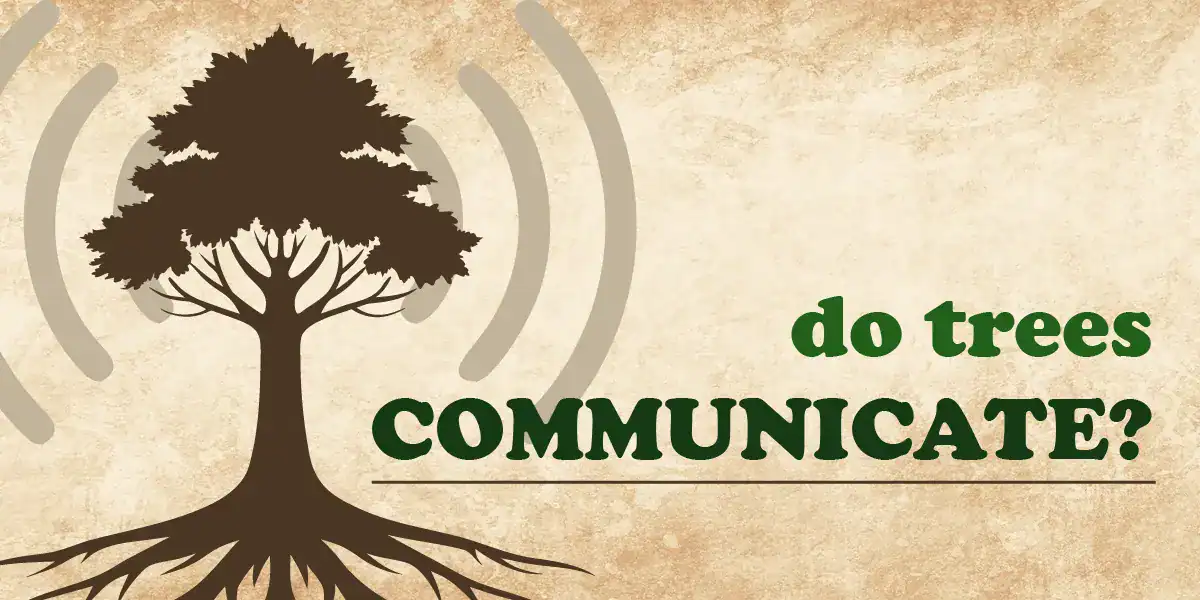If a tree falls in a forest and no one is around to hear it, does it make a sound?
What about when a tree “talks” to another tree? Have you ever heard whisperings in the forest?
Trees are abuzz with conversation beneath the soil. They share life-sustaining resources and exchange critical information for survival. Their seemingly silent world is far more connected and cooperative than we once thought. Tolkien was right!
But how and why do they do it, and which species lead the conversation?

And you thought they were just roots! No, these are high-tech communication devices.
How Trees Communicate
1. Root Systems
Trees can directly connect their root systems to share water, nutrients, and hormones. These exchanges often happen between parent trees and their offspring, or between neighboring trees.
2. Mycorrhizal Fungal Networks
The “Wood Wide Web” is an underground fungal network linking tree roots across forests. Fungi and trees form a symbiotic relationship — trees provide sugars to the fungi, which, in turn, help trees access nutrients like phosphorus, nitrogen, and water. This network allows trees to send chemical signals to one another.
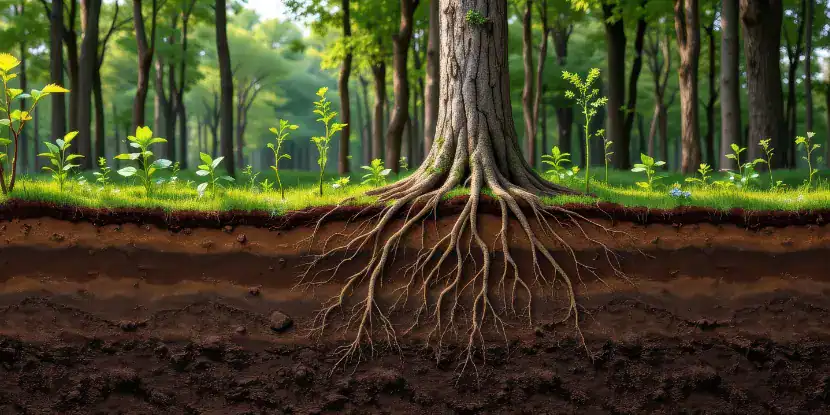
In a mycorrhizal network, fungi and trees form a symbiotic relationship. Trees provide sugars to the fungi, which, in turn, help trees access nutrients.
3. Chemical Signals
When a tree is attacked — say, by pests — it releases airborne chemicals called volatile organic compounds (VOCs). Nearby trees pick up these distress signals and activate their defense mechanisms, such as producing anti-pest chemicals.
4. Electrical Signals
Trees can also send electrical impulses through their vascular systems. This quick response method is similar to how neurons work in humans, helping trees react to immediate threats like sudden damage to their leaves.
Why Trees Communicate
Understanding why trees “talk” reveals much about a forest’s cooperative nature. Do trees gossip? Of course not — their communication is more useful.
1. Resource Sharing
Older, larger trees (often called “mother trees”) distribute resources to younger or weaker trees through their root networks. For example, they might share water during dry spells or nutrients when the soil is poor.
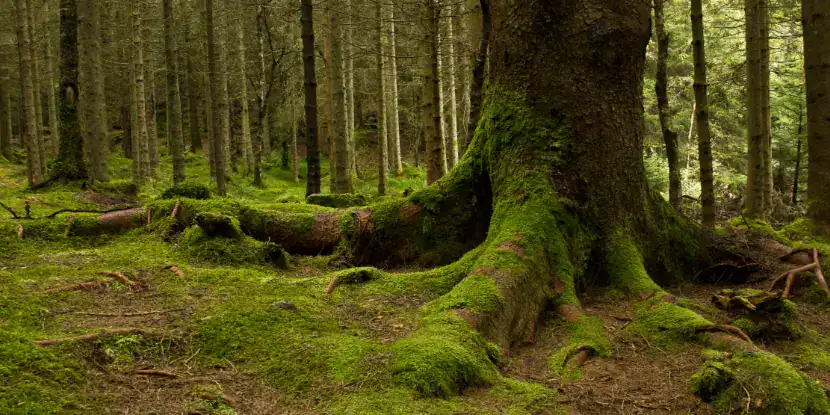
Every forest has old “mother trees” that share resources with younger trees.
2. Danger Warnings
Trees under attack send signals to warn neighboring trees about pests, diseases, or predators, giving others time to fortify their defenses.
3. Supporting Offspring
Mother trees favor their own seedlings by sharing more resources with them, ensuring they grow strong and survive competition.
4. Maintaining Forest Health
By collaborating rather than competing, trees help maintain balance in their ecosystem. This benefits the entire forest, making it more resilient to external challenges like climate change or storms.
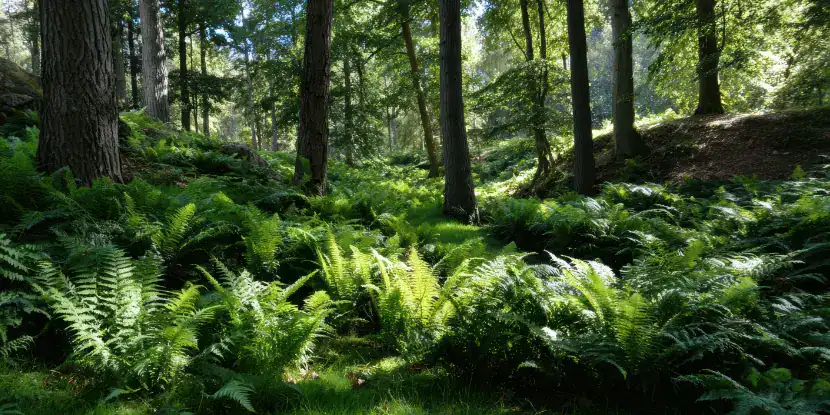
By collaborating instead of competing, trees help maintain a healthy forest.
How Trees Identify Their Species
Research suggests trees can distinguish between their species, relatives, and unrelated plants to allocate resources more strategically, often prioritizing their offspring or related species.
They do this through:
- Chemical Markers in Roots: Each species has unique chemical “fingerprints” in its root excretions. When nearby roots detect these markers, trees can determine whether they encounter friends or strangers.
- Electrical Communication: Some theories propose that electrical signals pulse differently depending on whether the receiver is of the same species.
The Biggest Communicators in the Tree World
Which are the talkiest trees of the forest? Several whispering giants stand out.
- Douglas firs have extensive root systems and share resources across great distances via mycorrhizal networks.
- Beech trees form dense root networks with overlapping territories, creating highly collaborative resource-sharing environments.
- Birch trees actively participate in the Wood Wide Web, exchanging nutrients with conifers like firs and spruce trees. Robert Frost was a swinger of birches. No doubt, the trees had a thing or two to say!
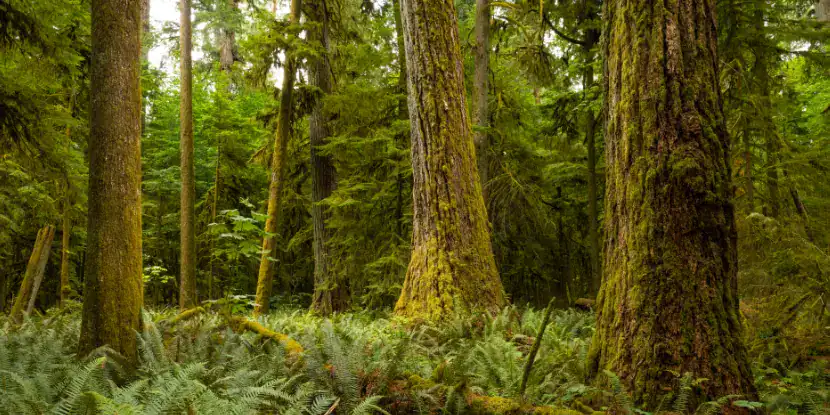
Douglas firs are among the “chattiest” trees. Never sit behind one at the theater.
California’s Chatty Species
- Coast live oaks often grow in communal groves with intertwining and collaborating roots. They use underground fungal networks to share water, particularly during dry spells, and to exchange chemical signals.
- California redwoods, famous for their towering heights, rely on their roots and fungal networks to share nutrients. Their communication ability helps them thrive in dense forests, shielding one another from strong winds and drought.
- Ponderosa pines warn neighboring trees about pest infestations by releasing chemical signals. They ensure stronger, healthier ecosystems.
- Valley oaks are intricately connected to their environments. Their long roots effectively share water and transmit stress signals during environmental challenges.
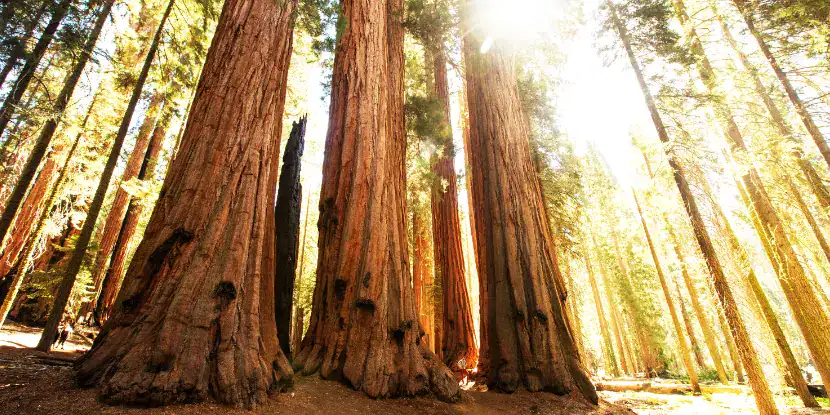
Some California redwoods can live for over 2,000 years. They have lots of shared wisdom and stories to tell!
Do Trees Ever Get Lonely?
Trees may not experience loneliness like people, but they interact with one another in a complex network of mutual support and protection.
They share nutrients and resources with nearby trees, supporting each other during times of need like drought. Forest ecosystems often form “mother” trees that distribute resources to younger or weaker trees.
This cooperative behavior benefits individual trees and helps maintain the overall health and resilience of the forest.
If only we humans could learn from trees and do likewise.
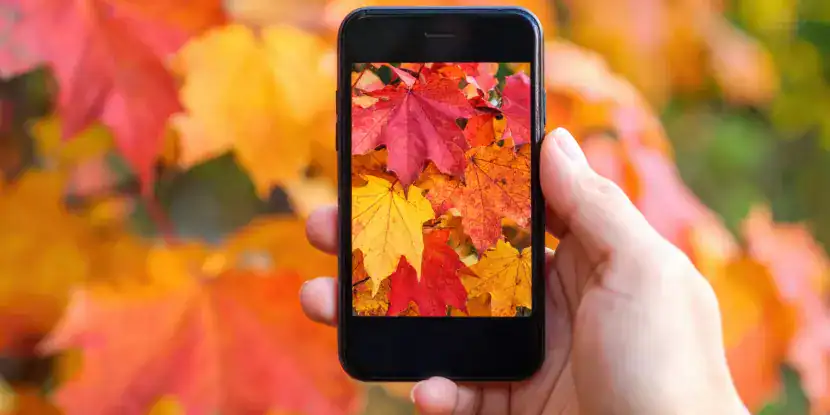
Sadly, there’s no Tinder for trees. If there were, it might be called “Timber.”
FAQs: How Trees Communicate
Q: Do all trees communicate?
Most trees communicate in some form, primarily through shared root systems or fungal networks. However, the extent of this communication varies between species and environments.
Q: Can trees communicate with other plants?
Trees often communicate with other plants, fungi, and animals by releasing specific chemical signals.
Q: How do trees help sick or dying neighbors?
They redirect nutrients toward struggling trees, sometimes extending their lives or helping them recover.
Q: Why do trees favor their own species?
Favoring their kind, particularly offspring, ensures their genetic legacy thrives in the forest ecosystem.
Q: Are younger trees part of the communication network?
Seedlings benefit significantly from their connections to mother trees and the broader Wood Wide Web, receiving essential nutrients and warnings.
Q: Do all forests have these underground networks?
Most temperate and tropical forests have well-developed fungal networks. However, desert or arid environments may have fewer connections due to harsher conditions.
Q: Can human activity disrupt tree communication?
Deforestation, soil degradation, and urban development can destroy fungal networks and root systems, cutting off communication.
Q: Is tree communication a new discovery?
Indigenous wisdom has long recognized this connectivity, but scientific research has only recently confirmed the mechanisms involved.

